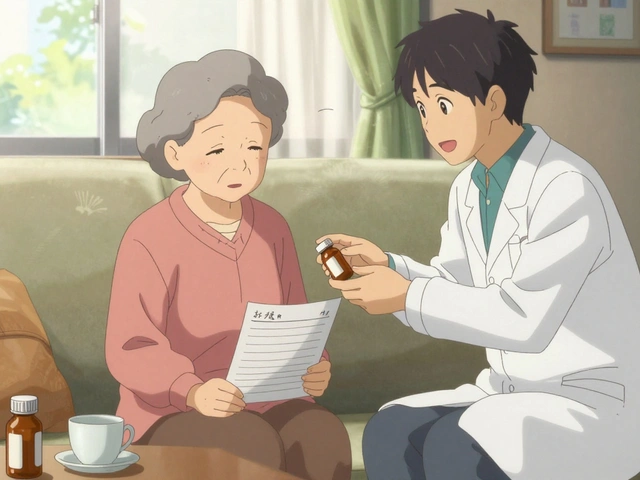How to Prepare for a Medication Review Appointment: A Step-by-Step Guide
Dec 5 2025
If you’ve ever been prescribed antibiotics, there’s a good chance a macrolide was in the mix. Macrolides are a group of antibiotics that help fight various bacterial infections by stopping bacteria from reproducing. They’re popular because they work well against respiratory infections, skin infections, and some sexually transmitted diseases. Common macrolides include erythromycin, clarithromycin, and azithromycin.
One thing that sets macrolides apart is their effectiveness even when bacteria are picky about which antibiotics they respond to. They’re often a go-to option for patients who can’t tolerate penicillin or when other antibiotics aren’t suitable. But like any medication, macrolides have their quirks and safety considerations you should be aware of.
Doctors typically prescribe macrolides for infections like bronchitis, pneumonia, strep throat, and whooping cough. They can also be helpful for skin infections like acne or cellulitis. In some cases, macrolides help treat infections caused by bacteria that live inside cells, such as Legionella. They’re also used if you need antibiotics for dental procedures and have a penicillin allergy.
It’s key to use these antibiotics only when necessary and exactly as prescribed. Skipping doses or stopping early can let bacteria bounce back stronger, leading to resistance. That means your antibiotics might not work as well next time. So, always follow your healthcare provider’s instructions closely.
Most people tolerate macrolides well, but some experience side effects like stomach upset, nausea, or diarrhea. More rarely, these antibiotics can affect your heart rhythm, so doctors will be cautious if you have heart problems or take certain medicines. Also, macrolides can interfere with other drugs, including blood thinners and cholesterol medications, so disclose all your current meds to your doctor.
Here’s a pro tip: If you’re prescribed a macrolide, ask your doctor or pharmacist about possible interactions and how to spot side effects early. If you notice unusual symptoms like chest pain or irregular heartbeat, seek medical help right away.
Bottom line? Macrolides are powerful antibiotics that, when used thoughtfully, can clear up tough infections quickly. Stick to the recommended dose, avoid self-medicating, and keep an open line with your healthcare team to make the most of this treatment safely.
Thinking you’re stuck if you have a penicillin allergy? You’re not! This detailed guide digs into safe medication options—like cephalosporins, macrolides, and carbapenems—while busting myths and giving practical tips for anyone navigating antibiotic choices. We’ll explore the science, the real-world risks, and share smart ways to talk to doctors if you’ve ever been told you’re allergic to penicillin.

Dec 5 2025

Nov 20 2025

Nov 22 2025

Dec 11 2025

Oct 21 2025